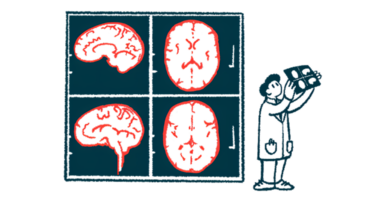Research Underway on Space Station Looking at Cellular Triggers of MS and Parkinson’s

An ongoing experiment at the International Space Station may help identify triggers for multiple sclerosis (MS) and Parkinson’s disease by studying how nerve cells and immune cells interact when exposed to microgravity.
Using patient-derived cells, researchers will study the way nerve cells grow, survive, and change their gene activity (gene expression) due to gravity. Knowledge gained is expected to help scientists understand how nerve and immune brain cells interact with each other and in ways that damage the nervous system, leading to neurodegenerative diseases. (Gene expression is the process by which information in a gene is synthesized to create a working product, like a protein.)
The team will also investigate how living in space affects these same cells in astronauts, particularly during long-duration missions.
“This is the first time anyone is researching the effects of microgravity and spaceflight on such cells,” Andres Bratt-Leal, PhD, from Aspen Neuroscience and study leader, said in a NASA news story written by Charlie Plain.
“These cells are hard to study in a lab because of the way gravity influences them. The cool part is now we can do it in space!” he added.
NASA is interested in how spaceflight changes the immune system because some astronauts experience strange effects, including a temporary reactivation of dormant, or “sleeping,” viruses.
To understand why this happens, researchers are focusing on brain cells involved in Parkinson’s and MS. In both diseases, damage to the central nervous system (brain and spinal cord) is thought to happen due to flaws in a person’s immune system.
Specifically, researchers will study two cell types — nerve cells (or neurons), and microglia, supportive immune cells that patrol the brain and defend it from threatening invaders like bacteria and viruses.
“The microglia are found in every part of the brain, and it’s really starting to look like neurodegenerative illnesses develop because the cells begin behaving improperly or overreacting,” said Valentina Fossati, PhD, an MS researcher at New York Stem Foundation Research Institute, and a study co-leader.
“Misbehaving microglia may contribute to killing the neurons,” Fossati added.
Neurons and microglia from MS and Parkinson’s patients, alongside cells from healthy people of the same age, were launched aboard the SpaceX CRS-18 cargo flight on July 31 and are now at the space station, inside a CubeLab system developed by Space Tango.
Since it is not safe to collect these cells directly from a person’s brain, researchers used a cell biology ‘trick’. They collected skin cells from patients and healthy people, and derived so-called induced pluripotent stem cells (iPSCs) — adult cells genetically programmed to return to an embryonic stem cell-like state.
iPSCs have the potential to differentiate into any cell type of the human body, so researchers used them to make neurons and microglia in the lab.
CubeLab is approximately the size of a small shoebox and contains a camera to record the cells, as well as a pair of 96-chamber containers holding the cells. A tubing and pump system automatically provides liquid nutrients to these cells.
Over the course a month, researchers will remotely watch how nerve cells organize into three-dimensional organ-like spheres called organoids, and how microglia cells grow and move to infiltrate these organoids.
When the cells return to Earth, their shape, arrangement, and gene expression will be examined to see the effects of microgravity and space radiation.
“We know that forces can influence the behavior of cells by changing aspects such as their shape. So, what happens when you remove gravity?” Bratt-Leal said. “How the cells respond will tell us new things about how they function.”
Such findings could ultimately help scientists identify new ways to treat MS and Parkinson’s disease, as well as ways of better protecting astronauts in space.






